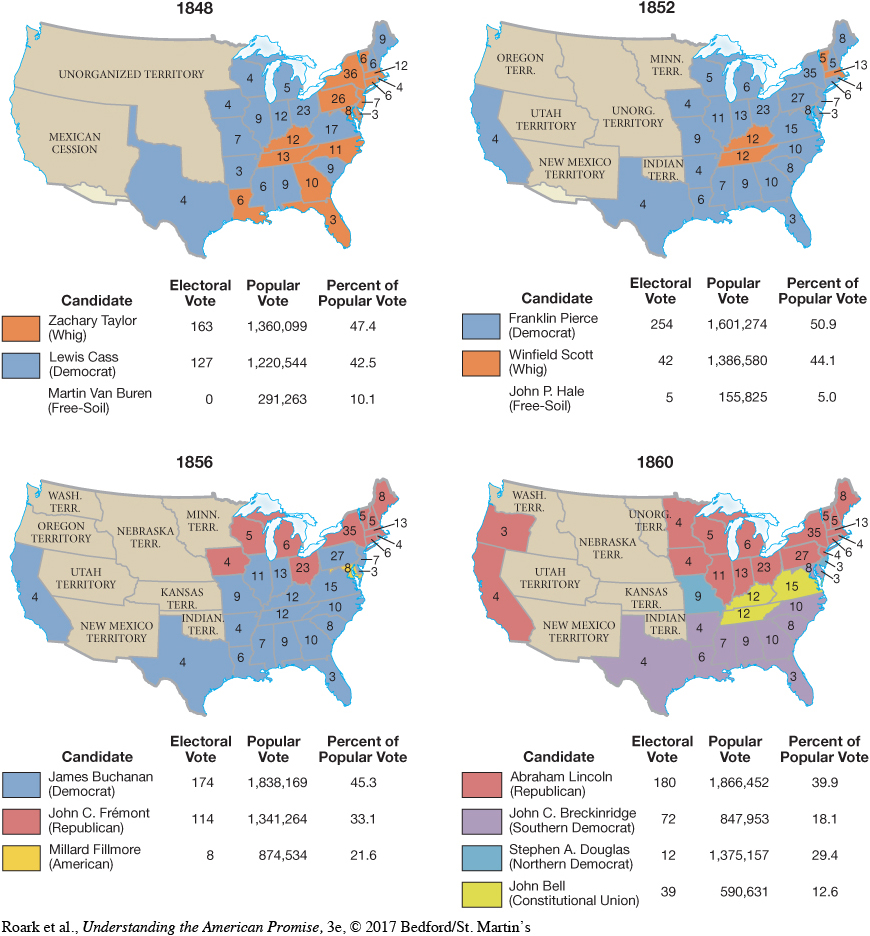The Old Parties: Whigs and Democrats
As early as the Mexican-American War, members of the Whig Party had clashed over the future of slavery in annexed Mexican lands. By 1852, the Whig Party could please its proslavery southern wing or its antislavery northern wing but not both. The Whigs’ miserable showing in the election of 1852 made it clear that they were no longer a strong national party. By 1856, after more than two decades of contesting the Democrats, they were hardly a party at all (see Map 14.4). [[LP Map: M14.04 Political Realignment, 1848-1860 – MAP ACTIVITY/

The collapse of the Whig Party left the Democrats as the country’s only national party. Popular sovereignty provided a doctrine that many Democrats could support. Even so, popular sovereignty very nearly undid the party. When Stephen Douglas applied the doctrine to the part of the Louisiana Purchase where slavery had been barred, he divided northern Democrats and destroyed the dominance of the Democratic Party in the free states. After 1854, the Democrats were a southern-dominated party. Still, gains in the South more than balanced Democratic losses in the North, and during the 1850s Democrats elected two presidents and won majorities in Congress in almost every election.
> TRACE CHANGE
OVER TIME
Around what issues did the Whigs organize as a political party in 1834, and how did its agenda and constituency change during its twenty-year lifespan?
The breakup of the Whigs and the disaffection of many northern Democrats set millions of Americans politically adrift. As they searched for new political harbors, Americans found that the death of the old party system created a multitude of fresh political alternatives.
Understanding the American Promise 3ePrinted Page 385
Section Chronology